Andrea
Zittel
Dreambuilding in the American West

The rightly celebrated US artist Andrea Zittel, 49, wears the same clothes every day for weeks on end. It’s part of her ongoing examination of our daily lives, aimed at discovering what we can live without. Her anti-consumerist project A-Z West lures all sorts of travellers and creatives to the tawny California desert to join in her pioneering study. Andrea’s an enthusiastic blogger of her fully disclosed life: visit Zittel.org to see what her newly bruised knees and this spring’s skirt will look like, and to find out exactly what krok bragd is.
One hundred and forty miles east of Los Angeles on the fringes of a vast national park, where two deserts meet and packs of coyotes roam free, an artist called Andrea Zittel has embarked on a unique experiment. In this landscape of ancient rounded boulders, she’s examining every aspect of day-to-day living – from clothing, furniture, food and shelter to personal relationships and our interactions with the outdoors – in an effort to understand human nature and tackle the biggest question we can ask ourselves: Why are we here?
If this sounds overly ambitious, it may be because our notions of what art can be have become inextricably linked to the market and the commodification it imposes. Which means Andrea has pulled off a rare feat: she has disassociated herself from many of the art world’s values and chosen to live far from its centres of power, yet she is acclaimed in those very same centres for her unwavering artistic vision. She’s represented by top galleries in New York, Los Angeles, London, Berlin and Milan. “Over the years, her work has never compromised itself in terms of the market or shifting public taste,” says the London dealer Sadie Coles, who has collaborated with her for nearly two decades. “Andrea has remained extremely constant and authentic to her own interests and investigations.” Through her network of galleries, Andrea sells sculptures, installations, a variety of compact living units including customised trailers – which go for between $60,000 and $250,000 – and works on paper ($15,000 to $30,000). The funds she raises are pumped back into her artistic practice in the desert. She moved to the Joshua Tree National Park nearly 15 years ago and has built a compound called A-Z West at the foot of a hill of massive jumbled rocks on a slope overlooking a wide valley. There she lives with her 10-year-old son Emmett, runs a busy studio, and hosts students, artists and other like-minded guests. There are dogs, too.
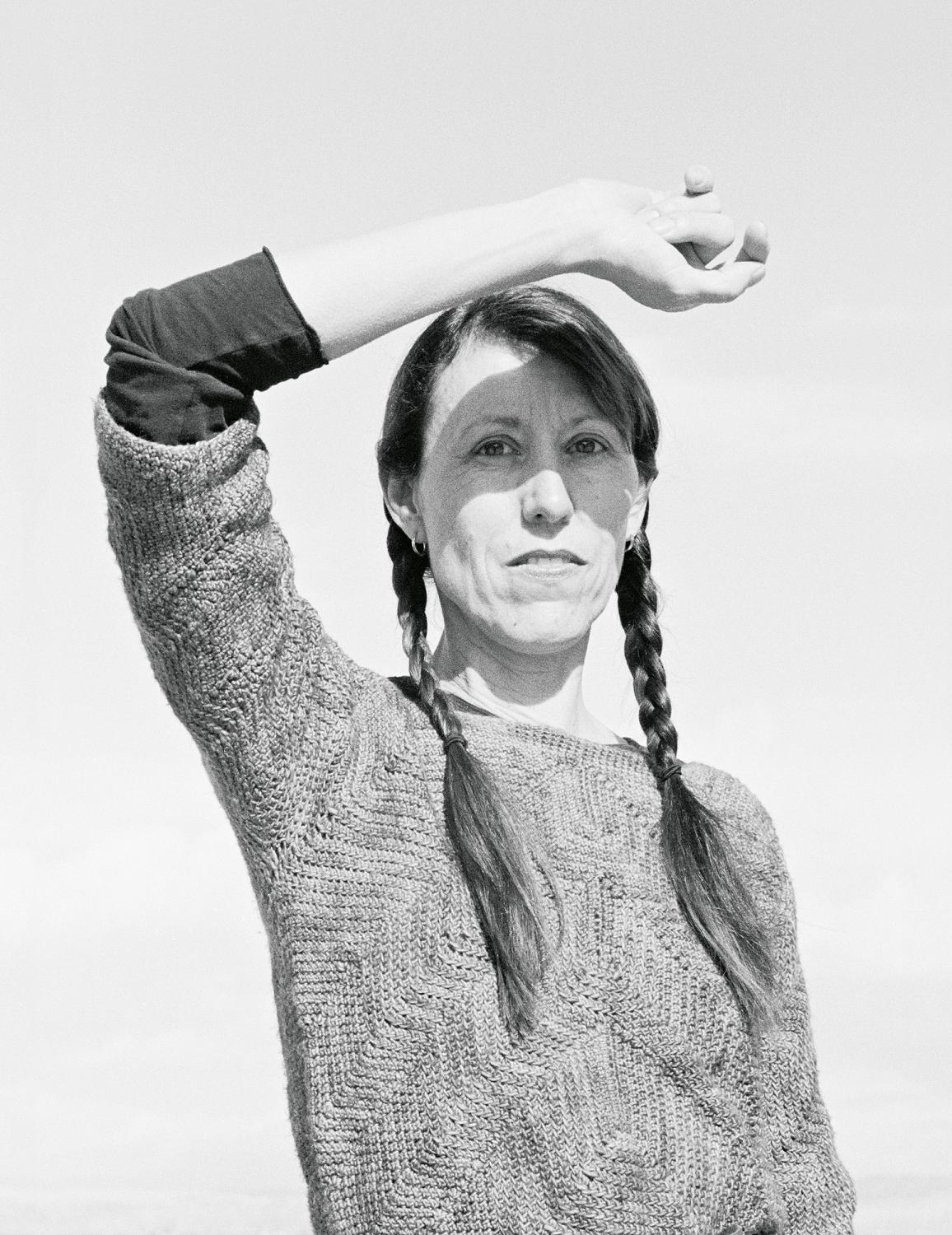
The nearby town of Joshua Tree is home to nature lovers who want to live near the national park; Andrea goes there often. Less frequently, she goes to Twentynine Palms, the next town on, which is home to one of the largest military training areas in the United States, complete with a fabricated Middle Eastern village where troops train before deployment to Iraq. It also has a drug problem: local youths, struggling to find work, turn to selling crystal meth here, although the situation has improved in recent years with the arrival of people from Los Angeles looking for second homes. Andrea has friends in all these different groups. “I wanted to have friends who aren’t artists,” she says. “Over the years, I’ve dated a lot of local people here, like a radiator mechanic and a guy who worked at the local hardware store, and so I felt I was able to fit in really easily.”
This March, the Palm Springs Art Museum, an hour’s drive in the other direction, will exhibit new textiles made in a weaving workshop in Andrea’s studio, along with others chosen by the artist from the museum’s modern and Native American collections. Also on show will be her A-Z Aggregated Stacks: shelving and storage units built from assortments of cardboard boxes covered in layers of white plaster. Like many of Andrea’s works, these are both sculptures that play with the language of modernism and its ordered grids by introducing an organic quality, and functional objects intended to be used by the collectors who live with them.
I visit A-Z West on a perfect sunny winter’s day. On arrival, I’m greeted by Andrea’s pack of rescue dogs – Mona Winona, Maggie Peppercorn and Owlette – who dart in and out of her studio and patrol the compound. Two more dogs, whose owner works in the nearby community of Yucca Valley, come here during office hours. “It’s so that they don’t have to be alone all day,” explains Andrea. There are long-haired cats – Mooncloud and Stripy Tigerwolf – and chickens and pigeons. Living with animals connects you to nature in an invaluable way, she says.
Andrea, who turns 50 this year, is a tall, willowy wisp of a woman whose long dark tresses are arranged in side-plaits that give her a girlish, Pippi Longstocking look. She speaks softly in measured tones. At first, she’s careful, almost reticent, when answering my questions: “I think a lot of damage can be done by allowing one’s identity to be shaped by other people. Sometimes it’s better to have a low profile and have control over it.”
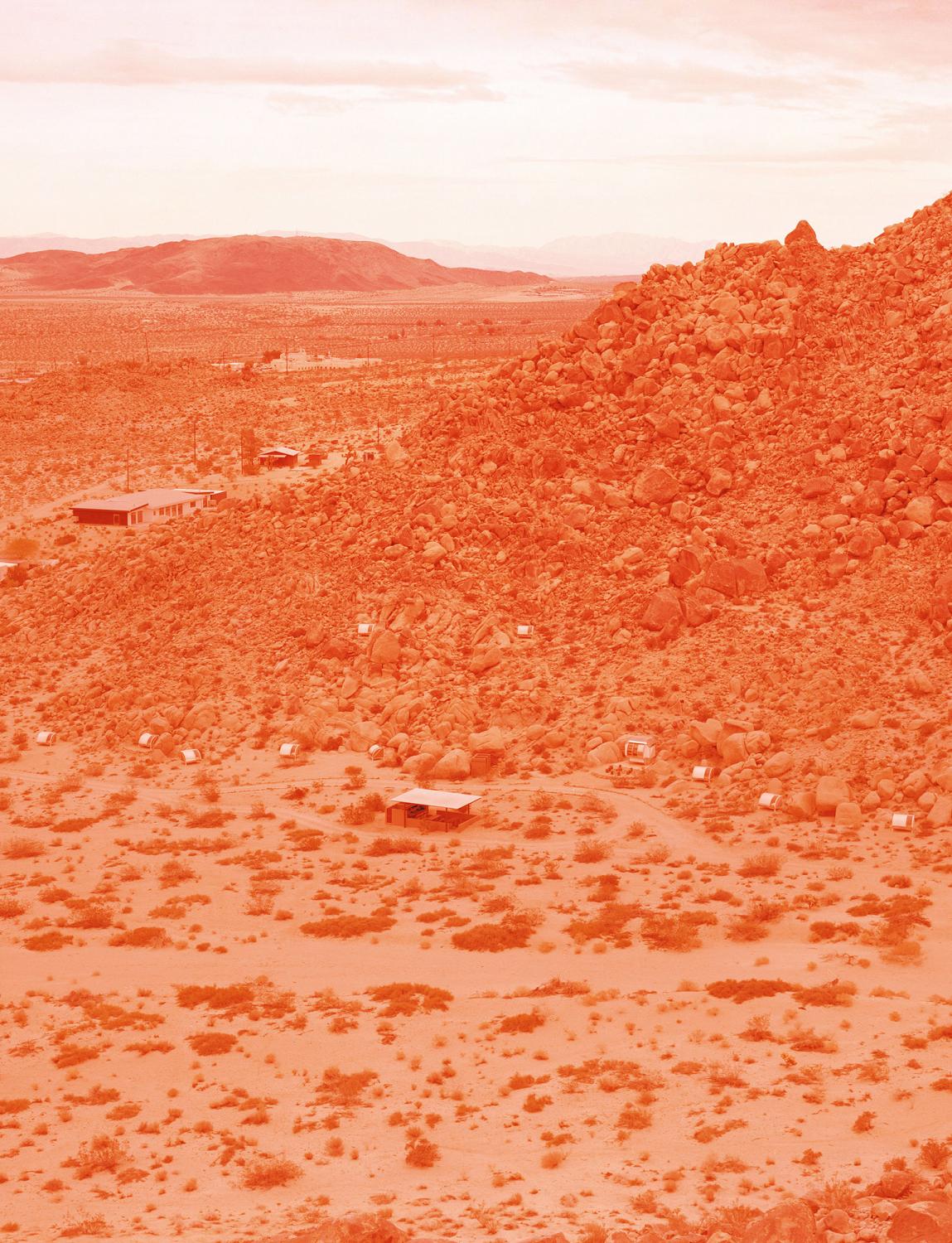
She’s sporting a floor-length A-line grey wool skirt sewn for her by a friend and based on a vintage black leather skirt Andrea found in a second-hand shop last year. “I really fell in love with it, so we copied the pattern.” She’s paired it with a dark grey wool vest, which she crocheted herself and which she wears over an off-the-shelf long-sleeved black wool top. This is her winter uniform, and she’ll put on these same garments every day for several months until the weather changes and she sets them aside for cooler attire. At night, she simply removes the skirt and vest and sleeps in the long-sleeved top and the thermal tights she wears underneath – she owns multiple versions of both. “I try to cut down the time I do unnecessary things,” she explains. “I only wash my hair once a week; I only take a shower every other day. We don’t sweat that much here because it’s so dry.”
Andrea started designing her own clothing and wearing a seasonal uniform more than two decades ago. “What makes us feel liberated is not total freedom, but rather living in a set of limitations that we have created and prescribed for ourselves,” she writes in These Things I Know for Sure, a personal manifesto of sorts that she devised in 2005. Comfort and practicality dictate her designs. “In the fall I made a black skirt, and then I realised it was a total dog hair magnet, so now I only wear things that match the dog hair.” Her uniform saves her time in other ways too. Packing for trips is easy, although she always travels with an emergency backup garment in case she spills red wine on her skirt.
Her choice of clothing exemplifies her journey as an artist, which she’s spent examining what it is that we really need to survive and prosper – it’s a one-woman protest against a contemporary culture predicated on shopping for useless objects, a culture which teaches us that we define ourselves by the products we buy rather than the way we live our lives. She’s designed or made many of the items which decorate her home, a renovated and expanded cabin at the heart of A-Z West first erected under federal homesteading laws that gave free land to settlers who agreed to build on it – part of an effort to colonise the West. The floor and one wall of the kitchen and dining area are covered in gold, white and black patterned tiles she designed herself: “I’m really into patterns, because they’re infinite in every direction,” she says. Three of her Aggregated Stacks cover another wall, though she’s hardly put anything on their shelves. “For me, clutter is a form of insanity, and I feel really good emotionally when there’s not too many things out,” she says as she makes me cinnamon-infused Bengal Spice tea, which she serves in a large bowl.
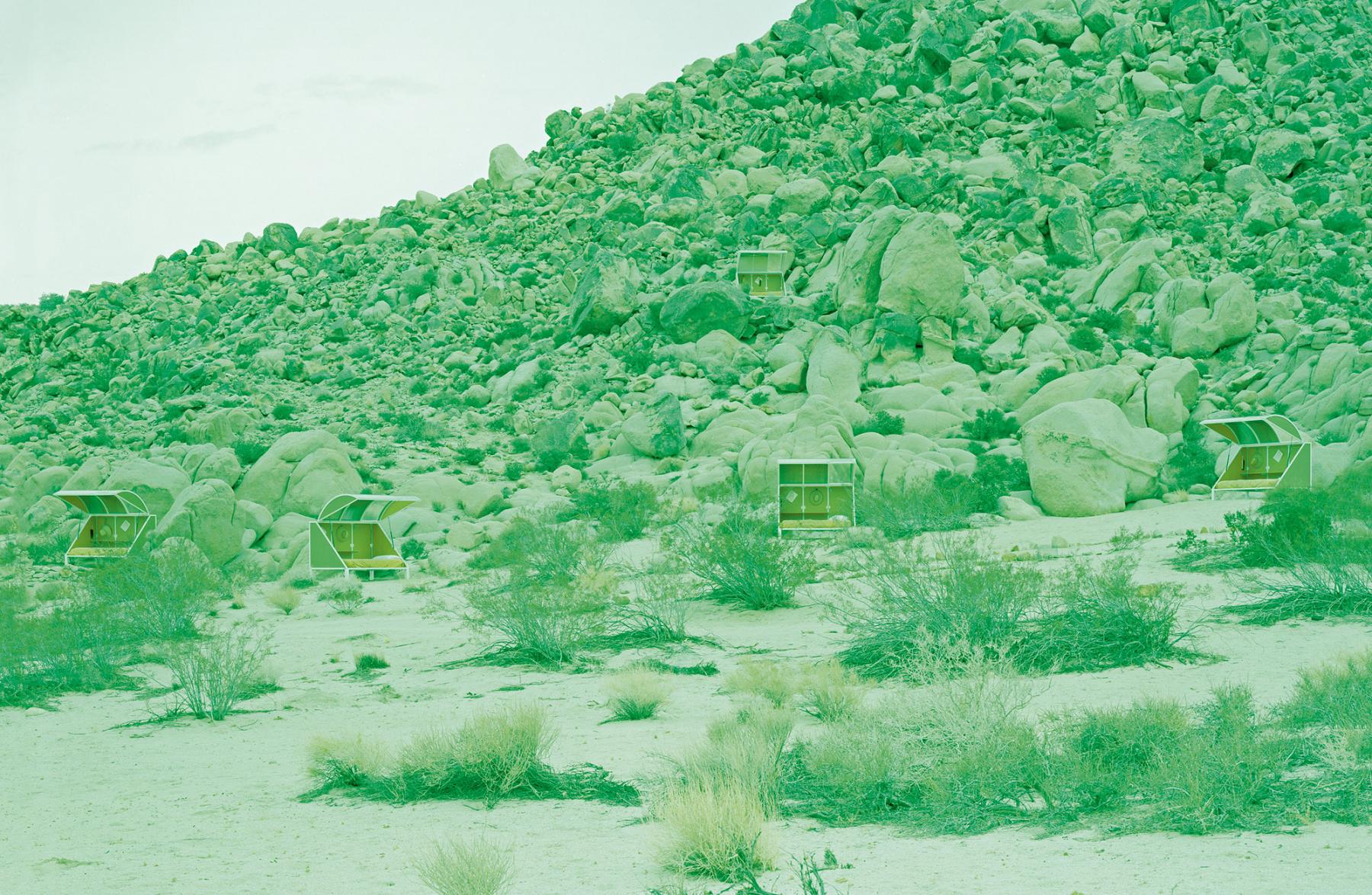
A-Z West, which occupies 35 acres of California’s high desert, is situated right next to Joshua Tree National Park, and Andrea has developed it with pioneering zeal. The Wagon Station encampment, pictured here, consists of 12 A-Z Wagon Stations, all designed by Andrea; guests are welcome to stay in them twice a year. The only payment is an hour’s work every morning — known as the Hour of Power.
She chooses the objects that surround her carefully. “I’ve had relationships fail because I didn’t like the contents of my boyfriend’s medicine cabinet,” she (sort of) jokes. In this respect, living with her 10-year-old son, Emmett, is challenging (Andrea is raising him with the boy’s father, who lives in a nearby town). “Emmett likes having rows and rows of objects out, and he won’t ever get rid of anything no matter how trivial it is. I tell him what I think, but children are really strong-willed, and I can’t change the way he thinks. It’s a lesson for me in letting go.”
One of her first projects as an artist was an attempt to declutter the life of her friend Jon Tower. It was the early ’90s, and she’d recently arrived in New York after completing a master’s in fine art at the Rhode Island School of Design. Jon was also a young artist, struggling to survive and living in the basement of an apartment building in Manhattan. “Somehow he had access to this little storage area where people put their skis. And he had tons of stuff; he was definitely a hoarder. I felt like he was basically a very attractive guy, but there were tweaks he could do to enhance what he had going for him. We identified his goal, which was that he really wanted a boyfriend, but anyone he brought home would be really freaked out by his living situation. One of the main things we did was to photograph his things and then throw them out. And it worked. He found a boyfriend.”
The Jon Tower Life Improvement Project, which lasted several months, was a pivotal moment for Andrea. “I was figuring out what my art is and what it isn’t, and I decided that after Jon I was going to focus on using myself as the guinea pig for my experiments.” In the early ’90s, Andrea was working in the Pat Hearn Gallery in New York when the recession hit, and she watched numerous mid-career artists “lose their galleries and have to go and get jobs. And it was almost impossible for a young artist to get taken on by a gallery; I realised how disposable artists were. So I think I always wanted to have autonomy, where I didn’t need to wait for a gallery to show my art to make it public, to make it relevant.” She ended up renting a small, cheap storefront in Brooklyn, living in the bathroom and making art in the front room. “The minute I had that space I felt really free. I didn’t need anything from anyone,” she says. In 1991 she came to the attention of Andrea Rosen, one of New York’s most highly regarded art dealers, and though it took Zittel a long time to trust her, she’s now been with the gallery for nearly two decades. “I have so much respect for her now,” the artist says, “but I was really critical in the beginning.”
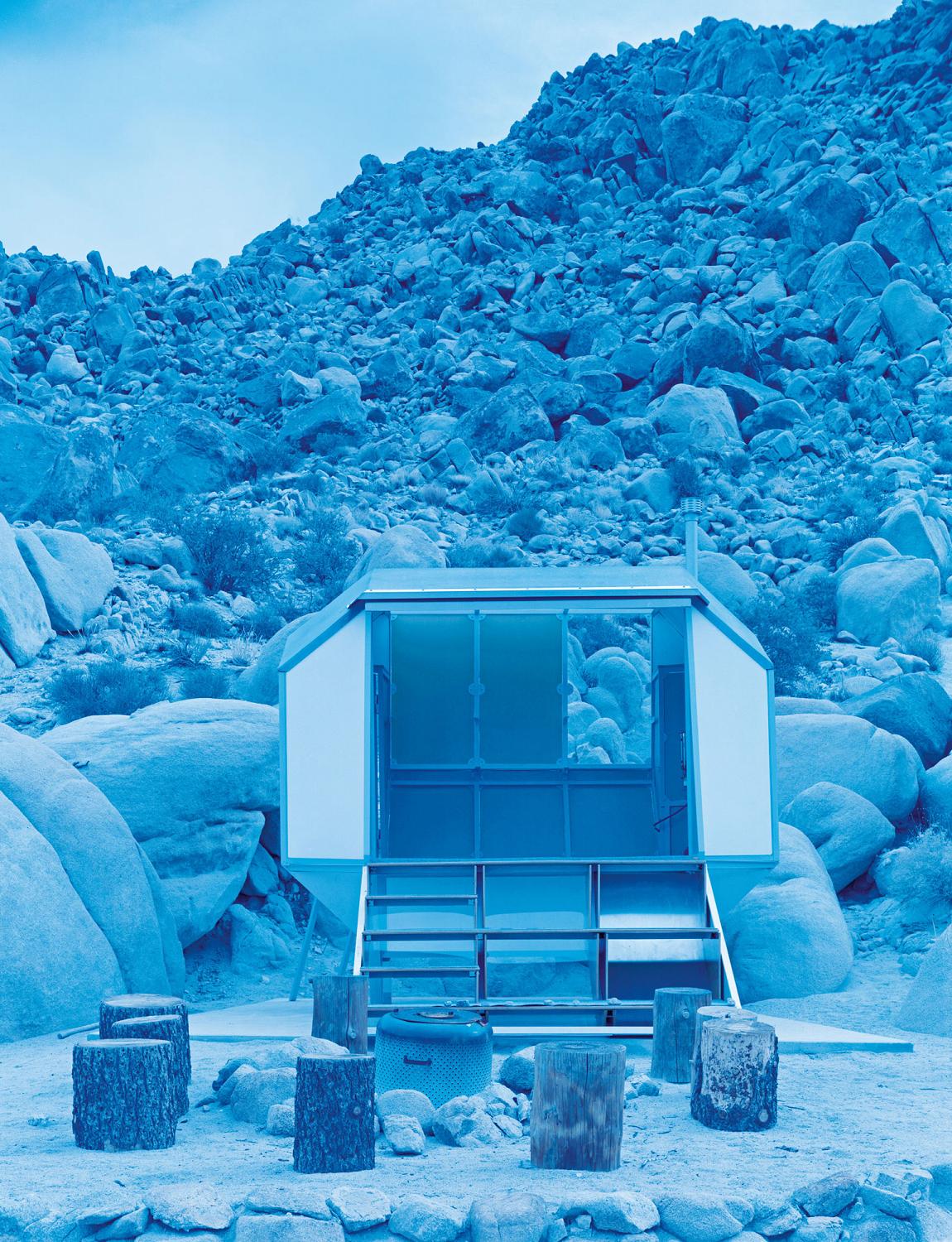
The key to understanding how Andrea chooses to live lies in her formative childhood experiences. She grew up on the outskirts of Escondido, a small city north of San Diego, where her parents moved when she was a baby. They built a house on a plot of scrubland bought from the only other settler in the area, a man Andrea and her younger brother Wayne grew up calling Uncle Bud. “It was just his house and ours; it was like the suburban ’70s frontier.” But by the time she was a teenager, the area had been completely developed. “It had become a full-on suburb, a total urban sprawl. There was a beautiful park, and they built a big shopping mall on it. I used to run around in the hills alone as a kid, and then that all disappeared. Humanity felt like a virus or a parasite that was just taking over everything. I wanted to move to the desert because it’s a much more severe landscape and I thought other people would be less inclined to move here.” Today A-Z West sits on 35 acres of contiguous land, and Andrea has no firm plans to expand it further. She also owns more land nearby, where she helps run a regular event called the High Desert Test Sites. Artists gather there to show their work, embark on road trips, and stage impromptu performances such as poetry readings.
“What makes us feel liberated is not total freedom, but rather living in a set of limitations that we have created and prescribed for ourselves.”
Visiting A-Z West is a strangely seductive experience. Take the encampment she’s built in the wash downhill from her house. Here, 12 of her Wagon Stations – sleek steel-and-aluminium sleeping pods – are positioned amid the boulders. There are also a communal outdoor kitchen, open-air showers and composting toilets. For several weeks every spring and autumn, anyone who feels an affinity with Andrea’s mission in the desert can stay here for free. In exchange, visitors – an impromptu community of artists, writers and travellers – are asked to help maintain the site for one hour every morning. Last spring, they included the British photographer Jason Evans. “It was a special, magical experience,” he says. “There’s a complete absence of doctrine about the place. Art spaces often try to ram ideas down your throat, but the A-Z West encampment is a kind of tabula rasa, waiting to be filled by the spirit of the people staying there. They don’t tell you what you should feel about sleeping in the desert; they let you have your own experience. Allowing people to stay there for free is a really magnanimous gesture. It really impressed me. Ever since I got back, I’ve been walking around looking at land. I used to think I needed plumbing to make staying somewhere viable. But actually I don’t.”
As well as the encampment, the A-Z West compound features three shipping containers that once served as Andrea’s studio and have now been converted into sleeping areas and a chicken coop. A new, purpose-built studio completed three and a half years ago sits just up the hill from her home. Inside the studio, everything is pristine; nothing is out of place. Her assistants clean it every morning. “There’s a certain quality which everyone has to have if they’re going to fit in here.” Andrea laughs. “Everybody is a little OCD.”
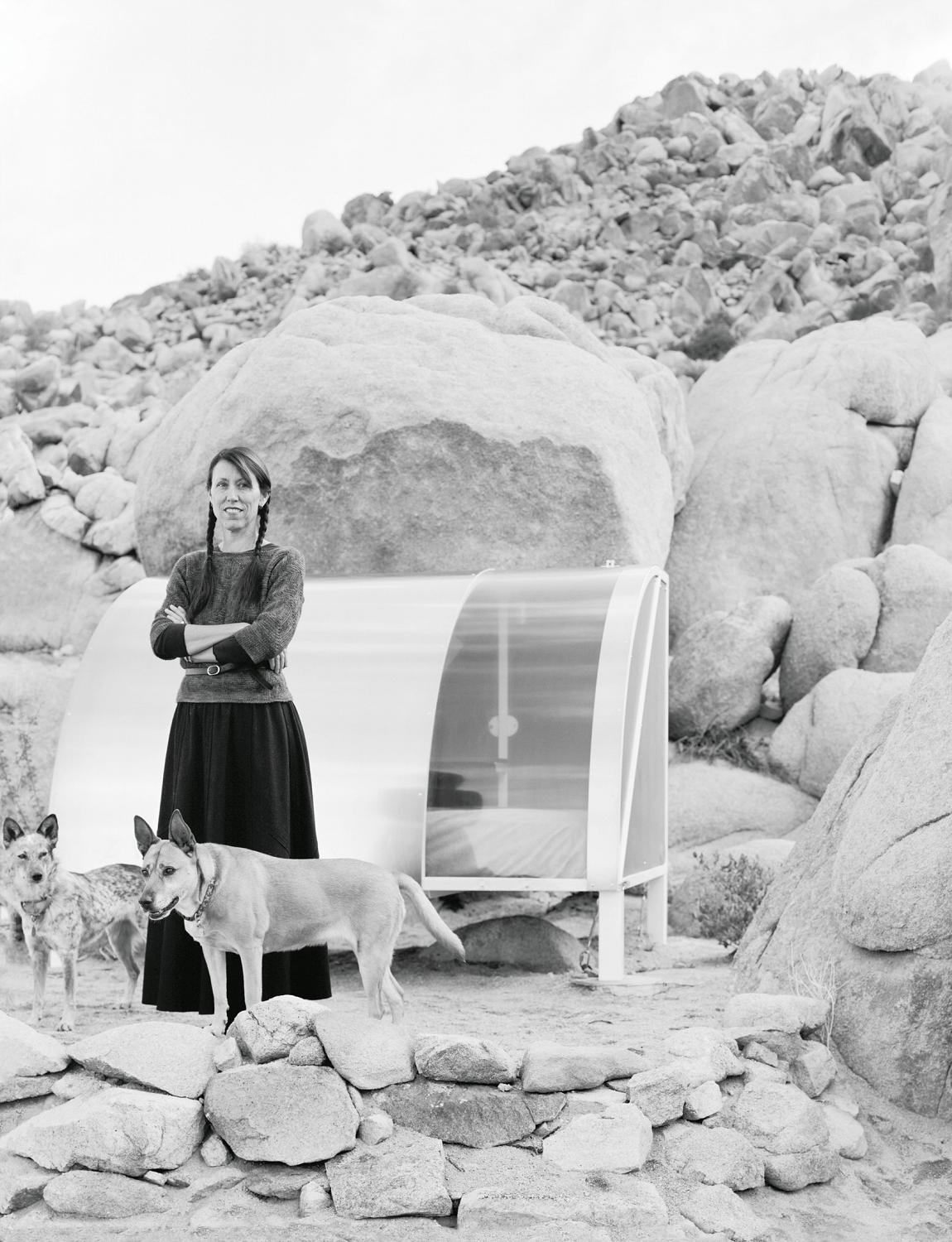
After she bought her first plot of land here in 2000, she set about acquiring whatever surrounding land she could to isolate herself from nearby development and create a protective cocoon around the place. But the site was challenging: there was no permanent supply of water – it had to be trucked in and stored in tanks – until several years later, when she got a grant to build a well, which now supplies the entire site. The shipping-container studios were “freezing in winter”. But, as she explains, she comes from a family that’s “much more hardcore than I am”. Her parents were teachers whom Andrea describes as “products of their era”: they conformed to society’s expectations and “had kids and normal jobs”. But at heart, they were adventurers. When they retired, they moved onto a boat and sailed it from San Diego to Australia. “They had some really extreme experiences doing the crossings,” she says. “A boom broke, and on another the engine failed, and my dad almost lost his leg to some tropical infection. They’ve been an inspiration to me, or maybe a challenge as to how I should live my life.” Today Andrea’s parents, now in their late 70s, live in Joshua Tree. But once a year they travel to Mexico, where their boat is dry-docked, to sail it for a few months.
In fact, Andrea is the one family member who isn’t in love with the ocean (Wayne, 47, runs a string of sailing schools in California and Mexico). She recalls sailing holidays on a tiny boat and the smell of diesel fuel permeating the bunk she slept in. “I think rejecting that life was my teenage rebellion,” she says. Nevertheless, in 1999 she embarked on a month at sea, living on a 54-tonne floating concrete island she’d built as an “experimental living situation” and “a kind of tribute to my family.” The island, named A-Z Pocket Property, was pulled by tugboats across the Baltic Sea between Denmark and Sweden. “It was really scary,” she says. “And I’m not scared of much. It was really stormy and cold, and I wasn’t really sure that this massive concrete structure was safe. That project was hard.”
The next morning, we eat spinach wraps at a vegetarian cafe after dropping Emmett off at school. “I hate cooking with such a passion,” says Andrea. “It’s like the most boring, horrible thing. I’ve been working on food production, looking at ways you can feed yourself without cooking by making food from dehydrated elements that you could eat, like animal food. It’s hard when you have a child, though, because you have to cook. I was trying to cook Emmett scrambled eggs and he would critique me every morning until I could make them right – somebody had to show me how.” Emmett, it seems, represents the only area of her life in which she can bear to compromise, and it’s hard to imagine what she’d be doing were she not an artist. What if she’d never built A-Z West? “I think I’d be a psychologist. I want to understand human nature and unpack human happiness."
Cristina RuizA distinct and intelligent voice in arts writing who has interviewed Barbara Kruger, Rachel Whiteread, Catherine Opie and Shirin Neshat for The Gentlewoman, Cristina is the former editor of The Art Newspaper who has also contributed to Vanity Fair, the Financial Times, UK Vogue and The Sunday Times Magazine.…read more Portraits by
David Benjamin SherryDavid Benjamin Sherry is an image-maker from Los Angeles, California, whose work uses colour to question traditional areas of photographic practice such as landscape and studio portraiture. He is a graduate of the Rhode Island School of Design and also possesses an MFA in photography from Yale. David's…read more